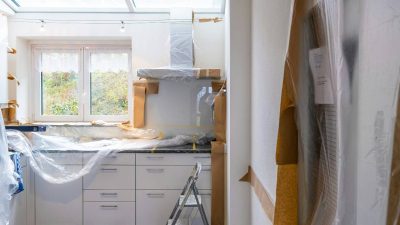It’s that time of year when windows can become full of condensation, marks or even mould on walls and ceilings can form and all too often the finger will point at the landlord for providing inadequate living conditions. Is it really down to the failings of the landlord? Interestingly, two out of three times, it is the tenants’ living habits that can cause problems with condensation and damp.
The main cause of condensation is warm air coming into contact with cooler surfaces. Often in the winter people want to prevent the cold entering the property and therefore keep windows and vents closed. The cost of energy bills often leads to tenants minimising their use of heating. These two factors combined, along with more washing dried inside during winter, not to mention the steam produced from cooking and showers/baths, create the perfect recipe for large amounts of condensation.
Spores are harmful to health
Over time, the cold walls absorb the moisture causing black mould to form, which will eventually lead to mould spores and can cause harm to health.
Older buildings that are more difficult to heat, or properties that do not have sufficient energy and ventilation systems, will be far more likely to experience condensation and mould. Landlords are legally required to provide EPC certificates to their tenants to help ensure economic heating bills and prevent damp problems occurring.
When tenants don’t heat a property sufficiently in the winter, condensation and mould will unavoidably appear. Left for a long time, the mould spores can damage the walls, ceilings and timber.
How landlords can educate tenants and help prevent these problems
Landlords should make regular inspections on their property. Rectifying long term damp and mould damage is costly and not a quick procedure either. If the problem is not treated with proper chemicals the spores can reproduce themselves and the whole cycle starts again.
Landlords should ensure tenants are knowledgeable on heating a property properly and preventing condensation. Rooms should ideally be kept at a minimum of 18 degrees all the time. Landlords should also ensure that the property is well insulated and that an efficient heating system is in place. There should be plenty of ventilation, particularly in areas where a lot of steam or moisture is created. Landlords can also take extra actions such as connecting moisture sensitive fans to the light switches for bathrooms, so they are automatically activated when tenants are in showers/baths and can’t be switched off unless the light is.
It might also be worth keeping a log on the tenancies which experienced condensation/mould problems and those that didn’t and find out the different living behaviours so that the positive practices can be recommended to future tenancies.











